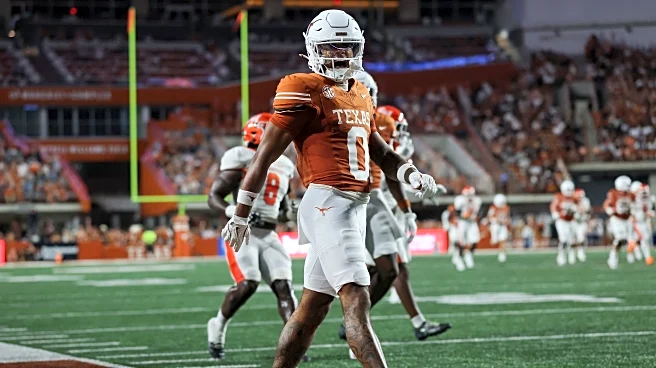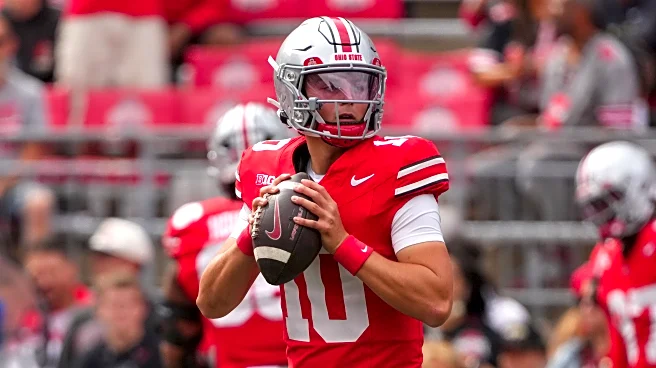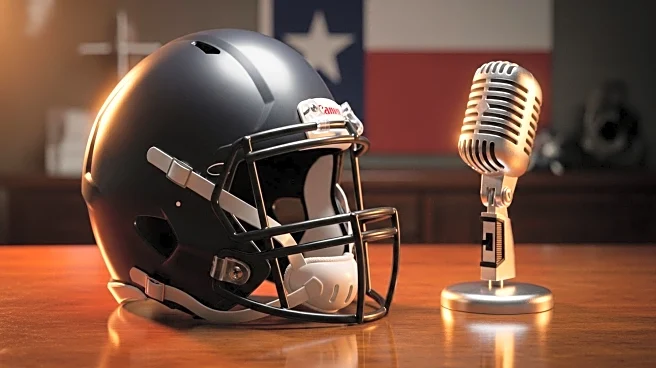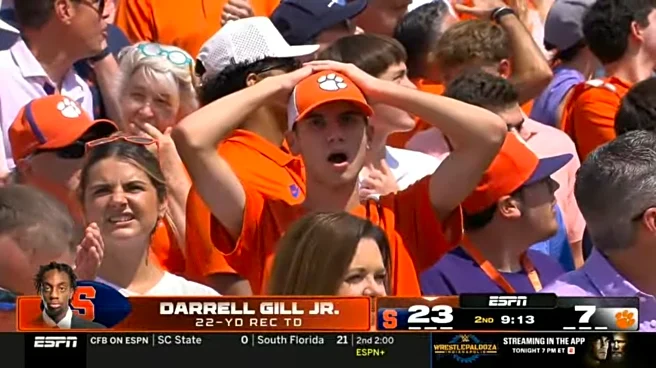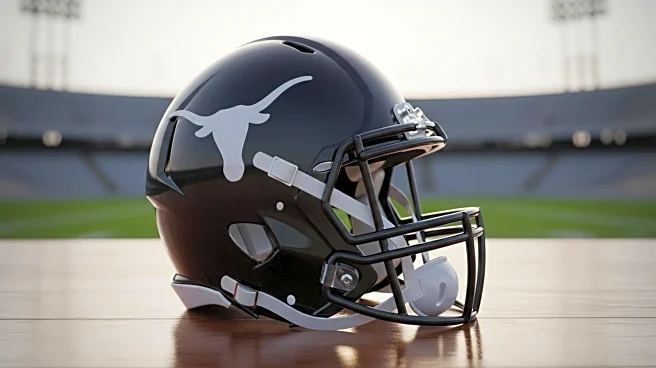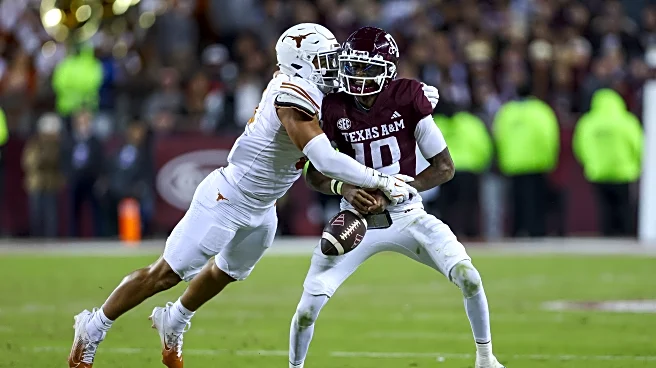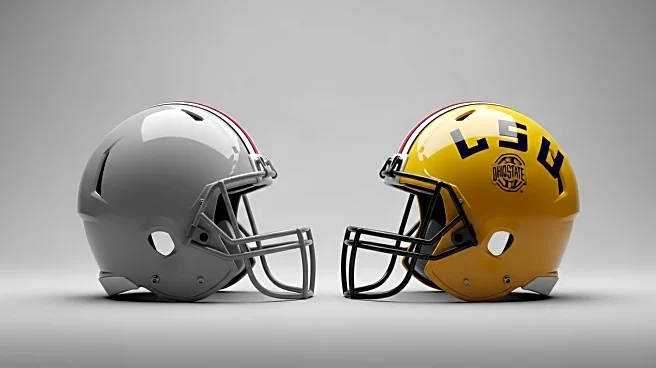Bye weeks are built for reflection, and the No.10 Texas Longhorns head into their first break of the season with some much-needed momentum amidst a variety of lingering questions. Four games in, the Longhorns are 3-1
and boast a top-10 ranking, with a loss to Ohio State on the road, a few unconvincing victories in Austin, and a thrashing last week that restored confidence about this team’s ultimate possibilities. But a 3–1 record isn’t the whole story and doesn’t mean every position group has been perfect. With SEC play looming with the completion of non-conference play, it’s time to hand out report card grades for each position group. Starting with the offense, we’ll work through the entire team, group by group in a three-part series. The 2025 offense has often looked discombobulated, disappointing even the lowest of expectations. Errant throws, penalties, and an overall lack of cohesion have plagued a unit that had high expectations and the talent to meet them. Before the explosion against Sam Houston State, the offense was tied with Army and Purdue for 73rd in the nation in points per game. The 55-point performance boosted the Longhorns to 41st but can’t erase three games of head-scratchingly bad execution. Critics of the Longhorns argue that the offense has faced multiple inept opponents and still underperformed seemingly without reason leading to questions about their validity. In this piece, we’ll evaluate how each offensive unit has performed.
Quarterbacks
Grade: D+

In perhaps the most scrutinized four-game stretch in all of college football, Arch Manning’s struggles throughout the first third of the regular season have been well documented in Austin, SEC country, and across the nation. A season after the departure of Quinn Ewers, the expectations for Manning were unfathomably high, but the preseason Heisman favorite struggled mightily in the first three games before showcasing a glimpse of his talent in the final contest before the bye.
Manning’s overall production has severely lagged behind his peers around the country and posed a limiting factor for the entire Texas offense as his performances have held the Longhorns back in multiple games.
A particularly bad showing against a bad UTEP defense led the home crowd in Austin to boo Manning during a streak of 10 straight incompletions. He ended the first half of that contest 5-of-16 passing for 69 yards (31 percent) including an ill-advised red-zone interception.
The performance against yet another overmatched opponent in Sam Houston State demonstrated the type of performance that Manning is capable of — and Texas fans expected. He finished the game 18-of-21 passing (86 percent) for 309 yards and 3 touchdowns along with two rushing touchdowns.
Manning looked accurate and in control, two elements that had been previously missing from his game.
Bottom line: Manning hasn’t lived up to the hype, and his early-season play has actively held Texas back at times. The talent is undeniable, but until that Sam Houston State performance becomes the norm instead of the exception, the quarterback room can’t earn more than a mediocre grade. As Texas moves forward, the ceiling for Manning remains sky high while the question of how close he gets to that ceiling remains uncertain.
Running backs
Grade: B-

The ground game for the Longhorns has been highly inconsistent amongst an ongoing battle with injuries. Premier backs Tre Wisner and CJ Baxter have both missed time this season, forcing a couple of inexperienced faces to step up.
While Christian Clark, Jerrick Gibson, and James Simon have been thrust into a committee-based system and done well, this trio has looked like three players still attempting to figure out the college game behind an inexperienced offensive line. There have been mishaps in passing scenarios and a handful of poor decisions while carrying with the ball, namely missing open lanes and failing to create explosive plays.
Losing two highly-talented, very experienced running backs is tough to overcome. There has been plenty to be excited about. Simon has made cuts that suggest a future of success at the position while Gibson looked strong against Sam Houston State, nearly averaging five yards per carry and scoring a rushing touchdown.
But, the ground game has left much to be desired, albeit doing well given the circumstances. Heading into SEC play, this group needs to improve. With the bye week to heal, the return of Wisner and Baxter should give this position room a much needed jolt.
Wide receivers
Grade: B-

The receiver room faced plenty of turnover from last season and has been hit by injuries, with DeAndre Moore missing time and Emmett Mosley yet to take a snap. Coupled with shaky quarterback play, the passing attack has looked meager for much of the year and while Manning deserves a chunk of that blame, the receivers share responsibility.
The biggest disappointment for this position has been the struggles of Ryan Wingo, who provides blazing speed and needed to make a noticeable jump from contributor to leader in the offseason. Early in the season, this jump was not evident, in part because of Manning’s struggles.
Through two games, Wingo was targeted 16 times. Six of them resulted in catches. Six. Those six catches totaled 65 yards.
Wingo was unable to utilize his speed to beat defenses over the top while a poor connection with Manning plagued intermediate routes. He also dropped a pass against San Jose State, likely the result of mounting pressure to get the passing game back on track.
In the last two contests, however, Wingo and Manning seem to have figured something out. Wingo reeled in a late touchdown against UTEP and hauled in two touchdowns on four catches for 93 yards against Sam Houston.
All in all, for a myriad of reasons, Wingo did not start the season playing like the star he can become, but his increased production against Sam Houston State was a welcome sight for Longhorn faithful.
In the absence of Moore and Mosley along with the slow start for Wingo, redshirt freshman Parker Livingstone exploded onto the scene. Perhaps the brightest offensive performer through four games, Livingstone leads the team in receiving yards and is tied for the most touchdowns with three. He’s made tough catches and explosive plays. His performance through four games has exceeded even the loftiest expectations.
With both of his touchdown receptions coming in the first quarter versus San Jose State, Livingstone became the third Texas player to have multiple receiving touchdowns in the first quarter of a game in the last 30 years. His 83-yard reception was also the longest by a freshman in a decade.
This group bounced back in a major way against Sam Houston. While the early struggles seem to be stifled, the ability to consistently create separation against high-quality defense remains unknown. Thus far in the season, the only true test against a quality secondary was in the opening contest, a game in which the receivers were unimpressive as a unit.
The lack of quality, experienced depth is another issue with this position group. While a long list of players have caught a pass, the number of reliable pass catchers shrinks significantly when excluding running backs and tight ends. After Wingo, Livingstone, and Moore, no player has solidified themselves as a true option to share snaps or step up in the event of further injuries.
A variety of young wide outs have seen action, primarily freshman Daylan McCutcheon and redshirt sophomore Ryan Niblett, while freshmen Kaliq Lockett and Jaime Ffrench played late in blowouts. All four of these names will be key down the stretch as Texas hopes to make a deep run at the end of the regular season.
A group with clear playmakers and young upside, but thin depth and inconsistency keep the grade below an A. Livingstone’s emergence is a huge boost and Wingo’s resurgence is encouraging, but the receivers still need to prove they can win against top-tier defenses.
Tight ends
Grade: A-

At risk of sounding like a beaten drum, the tight end room this season also faced roster turnover after losing both Gunnar Helm and Juan Davis last season. Former Cal tight end Jack Endries arrived on the Forty Acres as the primary option to replace the blocking and pass-catching production of Helm while a handful of other tight ends were fighting for time on the field in two tight end sets.
Endries has produced. With seven catches, he is fourth on the team, while his two touchdowns are second on the team. He looked reliable against Ohio State, using his body to secure catches, while demonstrating his vertical threat against San Jose State when he reeled in two touchdowns.
Endries was quiet against UTEP and Sam Houston State, a likely result of other players being targeted in efforts to jumpstart the passing game, but his ability to secure tough catches for first downs or in the red zone has already been proven at both Cal and early this season.
The support he adds as a blocker is another feature of his play that has flown under the radar. Head coach Steve Sarkisian praised TE1 after the San Jose State game, “I was impressed with his blocking,” a simple but noteworthy call out.
Behind Endries is quality depth from a wide range of sources. Jordan Washington and Nick Townsend have flashed while Emaree Watson and Spencer Shannon have also seen the field. Washington has reeled in four catches for 66 yards, including a 32 yard touchdown against Sam Houston, the first of his promising career.
Townsend has excited the Texas coaching staff, primarily as a blocking option on split zone runs. The freshman from Dekaney is already developing a reputation as a hard-hitting blocker.
Overall, the biggest strength of this group has been the depth. While Endries is clearly the leader of this group, the production in blocking and pass catching from the entire room is deeper than recent years. Sarkisian and the offensive staff can rotate a variety of bodies in while still getting high quality execution. This group has been steady while overcoming roster turnover. Not dominant enough for a true A but the consistency and versatility earn this group a strong A-.
Offensive line
Grade: C-

This unit has been bad. Regardless of the inexperience, Kyle Flood’s group has failed to consistently avoid penalties, create holes in the run game, and protect the pocket for Manning. This season, Texas has shifted to a much higher gap/power running scheme as opposed to the outside zone that Sarkisian utilized in the past, indicating the difference in offensive line personnel and capabilities.
Much of the blame this season has fallen on left guard Connor Stroh but the entire unit needs to improve. Stroh has fallen off balance and missed blocks regularly particularly against quicker moves. He’ll need to improve quickly or be singled out by opposing defenses in SEC play.
At the center position, Cole Hutson began the year as the starter but was listed as a co-starter with Connor Robertson against Sam Houston State after Hutson was injured the previous week. Hutson came in to the year with more experience than most on the offensive line. While he moved from guard to center, the lack of quality production, even while healthy, has been head scratching.
Trevor Goosby has taken over the left tackle position a year after filling in for Kelvin Banks while Brandon Baker mans the right side. Goosby and Baker stepped into starting roles as two highly-touted, athletic lineman. So far this season, Baker has shown flashes of greatness although he greatly struggled against Ohio State. Baker was overtaken on the right side in the run game and during pass protection. He bounced back mightily against UTEP but will need to play consistent football during SEC play.
At right guard, DJ Campbell is the most experienced lineman on the team, but has been flagged for five penalties through four games.
This unit has talent and potential but has yet to mesh into a reliable group. Protection breakdowns and an inconsistent run game have put Manning and company in difficult spots, dragging the grade down to a C-.
This bye arrives at the perfect time. Sarkisian and his staff now have two weeks to clean up mistakes, get key players healthy, and sharpen execution before SEC play ramps up. If the improvements made against Sam Houston are a sign of things to come, Texas is positioned to take the next step. If not, those early-season cracks could widen when the competition stiffens.
Tune in for part two of this series as the Texas defense is graded position-by-position.

